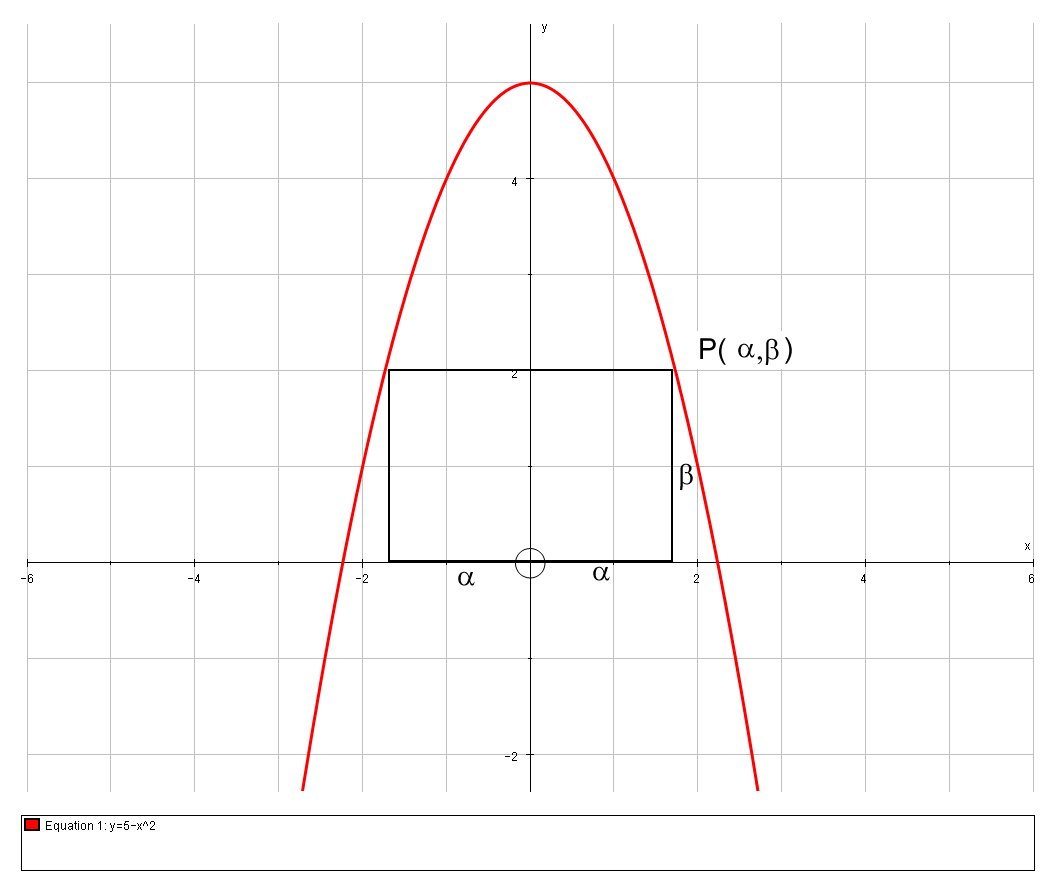A rectangle is inscribed with its base on the x-axis and its upper corners on the parabola y=5-x^2. What are the dimensions of such a rectangle with the greatest possible area, rounded to the nearest 3 decimals?
2 Answers
Length:
Height:
The maximum area is approximately
Explanation:
Let the two lower vertex of the rectangle be
The area is therefore:
A = 2xy
But we want to eliminate one of these variables. We see that for the context of this problem,
A = 2x(5 - x^2)
A = -2x^3 + 10x
Now we differentiate to find the critical point(s).
A' = -6x^2 + 10
This will have critical point(s) when it equals
0 = -6x^2 + 10
0 = -2(3x^2 - 5)
3x^2 = 5
x = +-sqrt(5/3)
Therefore, the length will be
Hopefully this helps!
Maximum area of
Explanation:

Let
Let us set up the following variables:
{ (alpha,"semi-width of rectangle"), (beta,"height of rectangle") (A,"Area of rectangle") :}
Our aim is to find
As
beta = 5-alpha^2 \ \ \ \ \ ..... [1]
And the total Area is that of a rectangle of width
A = 2 alpha beta
# \ \ \ = 2 alpha (5-alpha^2) \ \ \ \ \# (from [1] )
\ \ \ = 10alpha-2alpha^3
We now have the Area,
(dA)/(d alpha) = 10-6alpha^2
At a critical point we have
10-6alpha^2 = 0
:. alpha^2 = 5/3 => alpha = +-sqrt(5/3)
We require that
With this value of
beta = 5-alpha^2
\ \ = 5-5/3
\ \ = 10/3 ~~ 3.333333
And the corresponding area is:
A = 2 alpha beta
\ \ \ = 2 sqrt(5/3) 10/3 ~~ 8.6066296 ...
We can visually verify that this corresponds to a maximum by looking at the graph of
graph{10x-2x^3 [-2, 4, -5.5, 10]}
Which is consistent with a maximum of
Thus:
Maximum area of
Where the width is


